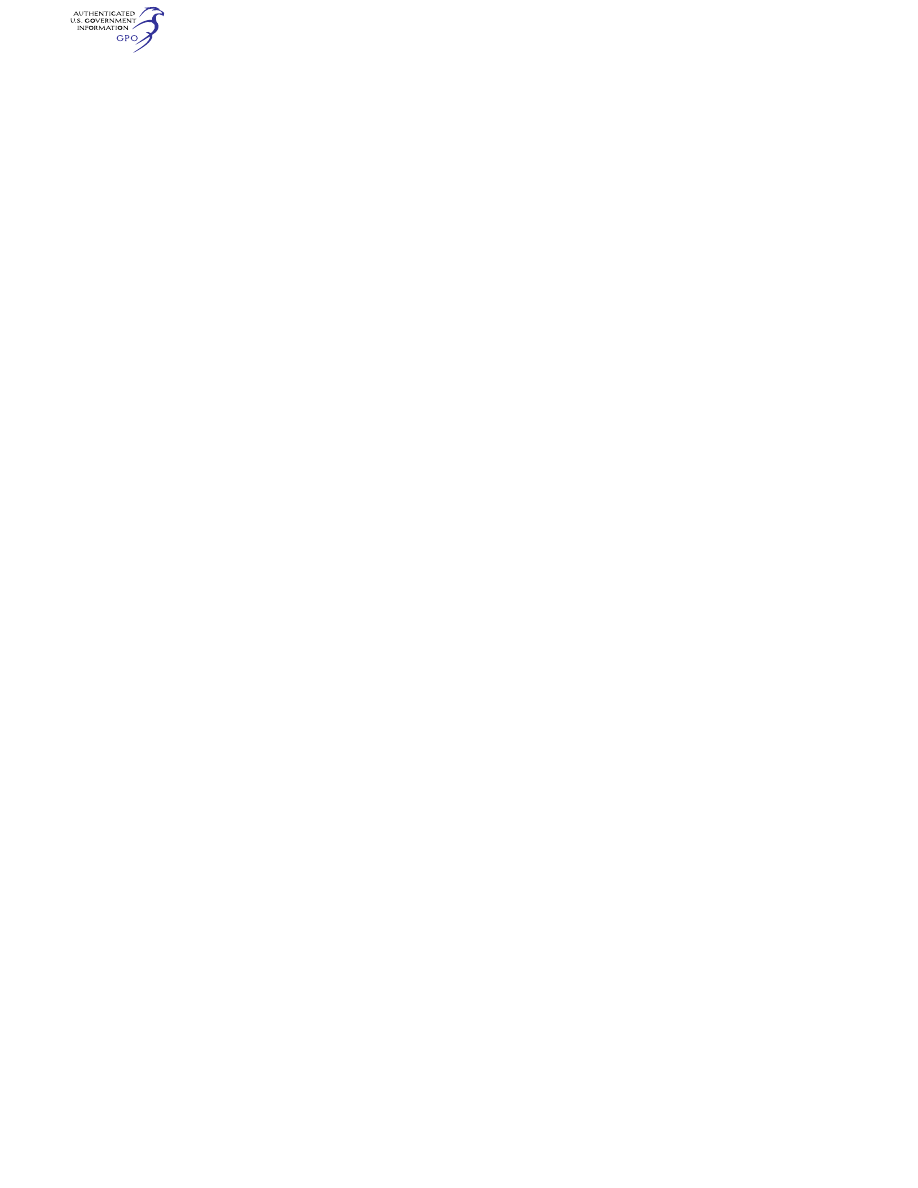
332
14 CFR Ch. I (1–1–24 Edition)
§ 125.75
(2) Notification and reporting haz-
ardous material incidents as required
by title 49 CFR; and
(3) Notification of the pilot in com-
mand when there are hazardous mate-
rials aboard, as required by title 49
CFR;
(p) Procedures for the evacuation of
persons who may need the assistance of
another person to move expeditiously
to an exit if an emergency occurs;
(q) The identity of each person who
will administer tests required by this
part, including the designation of the
tests authorized to be given by the per-
son; and
(r) Other procedures and policy in-
structions regarding the certificate
holder’s operations that are issued by
the certificate holder.
[Docket No. 19779, 45 FR 67235, Oct. 9, 1980, as
amended by Docket No. FAA–2022–0912;
Amdt. No. 125–73, 88 FR 34443, May 30, 2023]
§ 125.75 Airplane flight manual.
(a) Each certificate holder shall keep
a current approved Airplane Flight
Manual or approved equivalent for each
type airplane that it operates.
(b) Each certificate holder shall
carry the approved Airplane Flight
Manual or the approved equivalent
aboard each airplane it operates. A cer-
tificate holder may elect to carry a
combination of the manuals required
by this section and § 125.71. If it so
elects, the certificate holder may re-
vise the operating procedures sections
and modify the presentation of per-
formance from the applicable Airplane
Flight Manual if the revised operating
procedures and modified performance
data presentation are approved by the
Administrator.
Subpart D—Airplane Requirements
§ 125.91 Airplane requirements: Gen-
eral.
(a) No certificate holder may operate
an airplane governed by this part un-
less it—
(1) Carries an appropriate current
airworthiness certificate issued under
this chapter; and
(2) Is in an airworthy condition and
meets the applicable airworthiness re-
quirements of this chapter, including
those relating to identification and
equipment.
(b) No person may operate an air-
plane unless the current empty weight
and center of gravity are calculated
from the values established by actual
weighing of the airplane within the
preceding 36 calendar months.
(c) Paragraph (b) of this section does
not apply to airplanes issued an origi-
nal airworthiness certificate within the
preceding 36 calendar months.
§ 125.93 Airplane limitations.
No certificate holder may operate a
land airplane (other than a DC–3, C–46,
CV–240, CV–340, CV–440, CV–580, CV–600,
CV–640, or Martin 404) in an extended
overwater operation unless it is certifi-
cated or approved as adequate for
ditching under the ditching provisions
of part 25 of this chapter.
Subpart E—Special Airworthiness
Requirements
§ 125.111 General.
(a) Except as provided in paragraph
(b) of this section, no certificate holder
may use an airplane powered by air-
plane engines rated at more than 600
horsepower each for maximum contin-
uous operation unless that airplane
meets the requirements of §§ 125.113
through 125.181.
(b) If the Administrator determines
that, for a particular model of airplane
used in cargo service, literal compli-
ance with any requirement under para-
graph (a) of this section would be ex-
tremely difficult and that compliance
would not contribute materially to the
objective sought, the Administrator
may require compliance with only
those requirements that are necessary
to accomplish the basic objectives of
this part.
(c) This section does not apply to any
airplane certificated under—
(1) Part 4b of the Civil Air Regula-
tions in effect after October 31, 1946;
(2) Part 25 of this chapter; or
(3) Special Civil Air Regulation 422,
422A, or 422B.
§ 125.113 Cabin interiors.
(a) Upon the first major overhaul of
an airplane cabin or refurbishing of the
cabin interior, all materials in each

333
Federal Aviation Administration, DOT
§ 125.119
compartment used by the crew or pas-
sengers that do not meet the following
requirements must be replaced with
materials that meet these require-
ments:
(1) For an airplane for which the ap-
plication for the type certificate was
filed prior to May 1, 1972, § 25.853 in ef-
fect on April 30, 1972.
(2) For an airplane for which the ap-
plication for the type certificate was
filed on or after May 1, 1972, the mate-
rials requirement under which the air-
plane was type certificated.
(b) Except as provided in paragraph
(a) of this section, each compartment
used by the crew or passengers must
meet the following requirements:
(1) Materials must be at least flash
resistant.
(2) The wall and ceiling linings and
the covering of upholstering, floors,
and furnishings must be flame resist-
ant.
(3) Each compartment where smok-
ing is to be allowed must be equipped
with self-contained ash trays that are
completely removable and other com-
partments must be placarded against
smoking.
(4) Each receptacle for used towels,
papers, and wastes must be of fire-re-
sistant material and must have a cover
or other means of containing possible
fires started in the receptacles.
(c) Thermal/acoustic insulation ma-
terials. For transport category air-
planes type certificated after January
1, 1958:
(1) For airplanes manufactured before
September 2, 2005, when thermal/acous-
tic insulation is installed in the fuse-
lage as replacements after September
2, 2005, the insulation must meet the
flame propagation requirements of
§ 25.856 of this chapter, effective Sep-
tember 2, 2003, if it is:
(i) of a blanket construction or
(ii) Installed around air ducting.
(2) For airplanes manufactured after
September 2, 2005, thermal/acoustic in-
sulation materials installed in the fu-
selage must meet the flame propaga-
tion requirements of § 25.856 of this
chapter, effective September 2, 2003.
[Doc. No. 19799, 45 FR 67235, Oct. 9, 1980, as
amended by Amdt. 125–43, 68 FR 45084, July
31, 2003; Amdt. 125–50, 70 FR 77752, Dec. 30,
2005]
§ 125.115 Internal doors.
In any case where internal doors are
equipped with louvres or other ven-
tilating means, there must be a means
convenient to the crew for closing the
flow of air through the door when nec-
essary.
§ 125.117 Ventilation.
Each passenger or crew compartment
must be suitably ventilated. Carbon
monoxide concentration may not be
more than one part in 20,000 parts of
air, and fuel fumes may not be present.
In any case where partitions between
compartments have louvres or other
means allowing air to flow between
compartments, there must be a means
convenient to the crew for closing the
flow of air through the partitions when
necessary.
§ 125.119 Fire precautions.
(a) Each compartment must be de-
signed so that, when used for storing
cargo or baggage, it meets the fol-
lowing requirements:
(1) No compartment may include con-
trols, wiring, lines, equipment, or ac-
cessories that would upon damage or
failure, affect the safe operation of the
airplane unless the item is adequately
shielded, isolated, or otherwise pro-
tected so that it cannot be damaged by
movement of cargo in the compart-
ment and so that damage to or failure
of the item would not create a fire haz-
ard in the compartment.
(2) Cargo or baggage may not inter-
fere with the functioning of the fire-
protective features of the compart-
ment.
(3) Materials used in the construction
of the compartments, including tie-
down equipment, must be at least
flame resistant.
(4) Each compartment must include
provisions for safeguarding against
fires according to the classifications
set forth in paragraphs (b) through (f)
of this section.
(b)
Class A.
Cargo and baggage com-
partments are classified in the ‘‘A’’
category if a fire therein would be
readily discernible to a member of the
crew while at that crewmember’s sta-
tion, and all parts of the compartment
are easily accessible in flight. There

